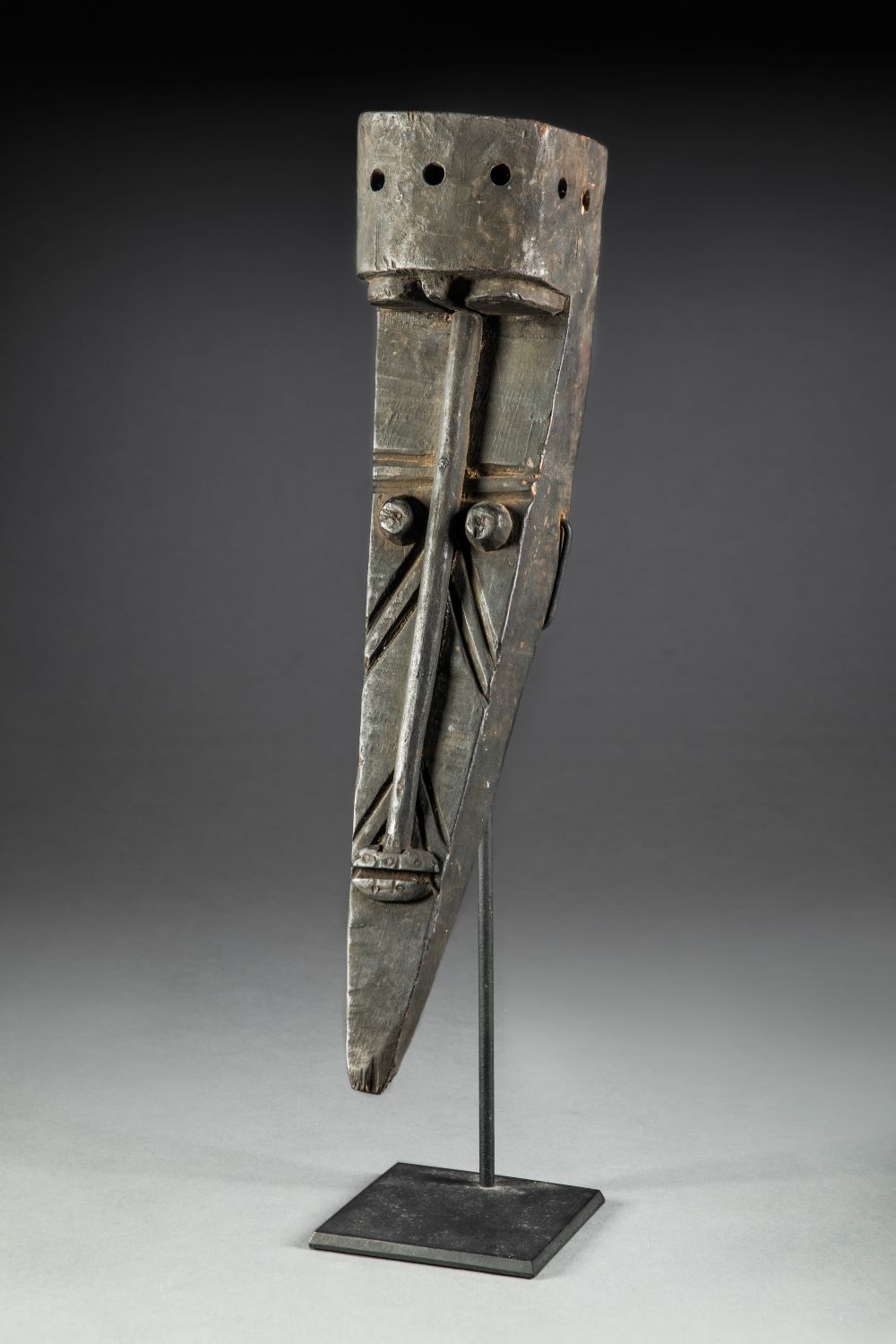Object Title: Ijo Dance Mask
Materials: Wood
Country: Nigeria
Culture: Ijo
Date Created: Late 19th Century to 20th Century
The Ijo may be divided into two major categories as far as Art and Ethnography: the Kalabari Ijo of River State and the ‘Western Ijo’ (actually a group of some 18 clans) of Delta State.
The Kalabari Ijo were dominated by trader-kings; chiefs that rose to prominence and hegemony by controlling the trade routes along the rivers leading inland and controlling access to goods that were sought after by Europeans anchored at Sea ports on the Coast. An almost unbroken lineage of such leaders exists to this day and dates back well over a hundred years – prior to that numerous lesser chiefs controlled multiple areas and warred almost constantly.
In an ethnographic context, most of the art is created to placate the spirits of nature, primarily those of the rivers and seas, and to honor leaders and important elders – primarily for their mercantile prowess. The Ross mask is in the form of a Canoe, which would have been worn with a fiber costume atop the head, along with masks depicting various forms of water creatures. When not in use, as the field photo indicates, these masks were kept in the house of the ancestral/chiefly shrines.
Exhibition History:
In Memoriam – Bonnie Terrill Ross (1956-2022). New York: QCC Art Gallery of CUNY, October 12, 2023, to February 16, 2024.


